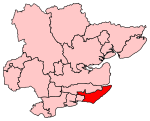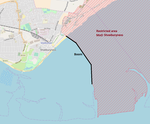Great Wakering Rovers F.C.
1919 establishments in EnglandAssociation football clubs established in 1919EngvarB from June 2018Essex Olympian Football LeagueEssex Senior Football League ... and 5 more
Football clubs in EnglandFootball clubs in EssexGreat Wakering Rovers F.C.Isthmian League clubsSouthern Football League clubs
Great Wakering Rovers Football Club is a football club located in Great Wakering, near Southend on Sea in Essex, England. The club are members of the Essex Senior League and play at Burroughs Park.
Excerpt from the Wikipedia article Great Wakering Rovers F.C. (License: CC BY-SA 3.0, Authors).Great Wakering Rovers F.C.
Little Wakering Hall Lane, Essex
Geographical coordinates (GPS) Address Nearby Places Show on map
Geographical coordinates (GPS)
| Latitude | Longitude |
|---|---|
| N 51.555555555556 ° | E 0.79777777777778 ° |
Address
Burroughs Park
Little Wakering Hall Lane
SS3 0HG Essex, Great Wakering
England, United Kingdom
Open on Google Maps









